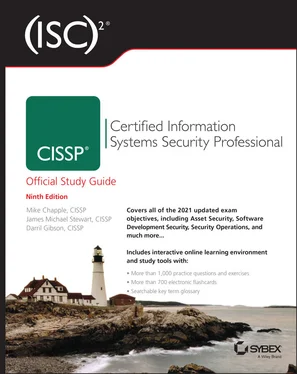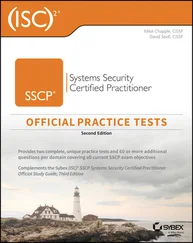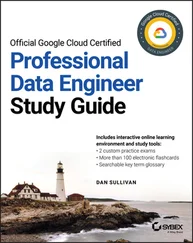Privacy in the Workplace
One of the authors of this book had an interesting conversation with a relative who works in an office environment. At a family gathering, the author's relative casually mentioned a story he had read online about a local company that had fired several employees for abusing their internet privileges. He was shocked and couldn't believe that a company would violate their employees' right to privacy.
As you've read in this chapter, the U.S. court system has long upheld the traditional right to privacy as an extension of basic constitutional rights. However, the courts have maintained that a key element of this right is that privacy should be guaranteed only when there is a “reasonable expectation of privacy.” For example, if you mail a letter to someone in a sealed envelope, you may reasonably expect that it will be delivered without being read along the way—you have a reasonable expectation of privacy. On the other hand, if you send your message on a postcard, you do so with the awareness that one or more people might read your note before it arrives at the other end—you do not have a reasonable expectation of privacy.
Recent court rulings have found that employees do not have a reasonable expectation of privacy while using employer-owned communications equipment in the workplace. If you send a message using an employer's computer, internet connection, telephone, or other communications device, your employer can monitor it as a routine business procedure.
That said, if you're planning to monitor the communications of your employees, you should take reasonable precautions to ensure that there is no implied expectation of privacy. Here are some common measures to consider:
Clauses in employment contracts that state the employee has no expectation of privacy while using corporate equipment
Similar written statements in corporate acceptable use and privacy policies
Logon banners warning that all communications are subject to monitoring
Warning labels on computers and telephones warning of monitoring
As with many of the issues discussed in this chapter, it's a good idea to consult with your legal counsel before undertaking any communications-monitoring efforts.
European Union Privacy Law
The European Union (EU) has served as a leading force in the world of information privacy, passing a series of regulations designed to protect individual privacy rights. These laws function in a comprehensive manner, applying to almost all individually identifiable information, unlike U.S. privacy laws, which generally apply to specific industries or categories of information.
European Union Data Protection Directive (DPD)
On October 24, 1995, the European Parliament passed a sweeping Data Protection Directive (DPD) outlining privacy measures that must be in place for protecting personal data processed by information systems. The directive went into effect three years later in October 1998, serving as the first broad-based privacy law in the world. The DPD required that all processing of personal data meet one of the following criteria:
Consent
Contract
Legal obligation
Vital interest of the data subject
Balance between the interests of the data holder and the interests of the data subject
The directive also outlined key rights of individuals about whom data is held and/or processed:
Right to access the data
Right to know the data's source
Right to correct inaccurate data
Right to withhold consent to process data in some situations
Right of legal action should these rights be violated
The passing of the DPD forced organizations around the world, even those based outside Europe, to consider their privacy obligations due to transborder data flow requirements. In cases where personal information about European Union citizens left the EU, those sending the data were required to ensure that it remained protected.
European Union General Data Protection Regulation
The European Union passed a new, comprehensive law covering the protection of personal information in 2016. The General Data Protection Regulation (GDPR) went into effect in 2018 and replaced the DPD on that date. The main purpose of this law is to provide a single, harmonized law that covers data throughout the European Union, bolstering the personal privacy protections originally provided by the DPD.
A major difference between the GDPR and the data protection directive is the widened scope of the regulation. The new law applies to all organizations that collect data from EU residents or process that information on behalf of someone who collects it. Importantly, the law even applies to organizations that are not based in the EU , if they collect information about EU residents. Depending on how this is interpreted by the courts, it may have the effect of becoming an international law because of its wide scope. The ability of the EU to enforce this law globally remains an open question.
The key provisions of the GDPR include the following:
Lawfulness, fairness, and transparency says that you must have a legal basis for processing personal information, you must not process data in a manner that is misleading or detrimental to data subjects, and you must be open and honest about data processing activities.
Purpose limitation says that you must clearly document and disclose the purposes for which you collect data and limit your activity to disclosed purposes.
Data minimization says that you must ensure that the data you process is adequate for your stated purpose and limited to what you actually need for that purpose.
Accuracy says that the data you collect, create, or maintain is correct and not misleading, that you maintain updated records, and that you correct or erase inaccurate data.
Storage limitation says that you keep data only for as long as it is needed to fulfill a legitimate, disclosed purpose and that you comply with the “right to be forgotten” that allows people to require companies to delete their information if it is no longer needed
Security says that you must have appropriate integrity and confidentiality controls in place to protect data.
Accountability says that you must take responsibility for actions you take with protected data and that you must be able to demonstrate your compliance.
Cross-Border Information Sharing
GDPR is of particular concern when transferring information across international borders. Organizations needing to conduct transfers between their subsidiaries have two options available for complying with EU regulations:
Organizations may adopt a set of standard contractual clauses that have been approved for use in situations where information is being transferred outside of the EU. Those clauses are found on the EU website ( ec.europa.eu/info/law/law-topic/data-protection/international-dimension-data-protection/standard-contractual-clauses-scc_en) and are available for integration into contracts.
Organizations may adopt binding corporate rules that regulate data transfers between internal units of the same firm. This is a very time-consuming process—the rules must be approved by every EU member nation where they will be used, so typically this path is only adopted by very large organizations.
In the past the European Union and the United States operated a safe harbor agreement called Privacy Shield. Organizations were able to certify their compliance with privacy practices through independent assessors and, if awarded the privacy shield, were permitted to transfer information.
However, a 2020 ruling by the European Court of Justice in a case called Schrems II declared the EU/US Privacy Shield invalid. Currently, companies may not rely on the Privacy Shield and must use either standard contractual clauses or binding corporate rules. This may change in the future if the Privacy Shield is modified to meet EU requirements.
Читать дальше












